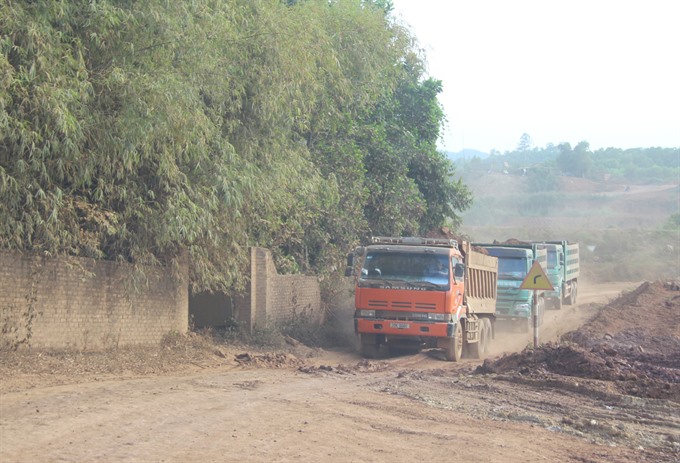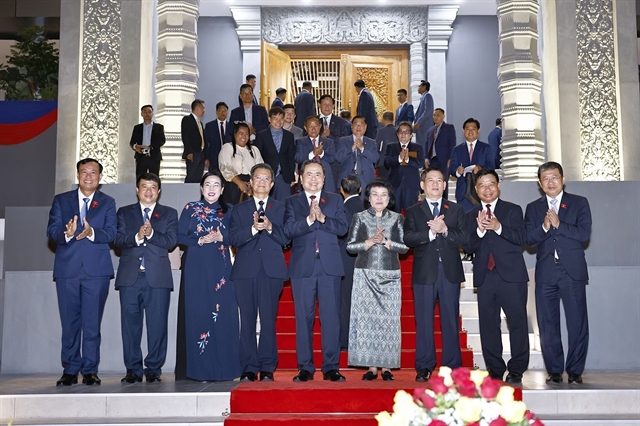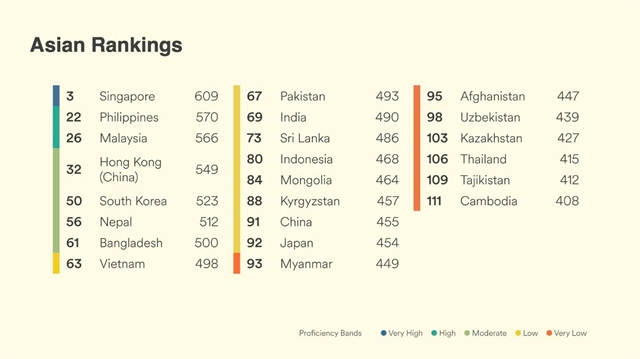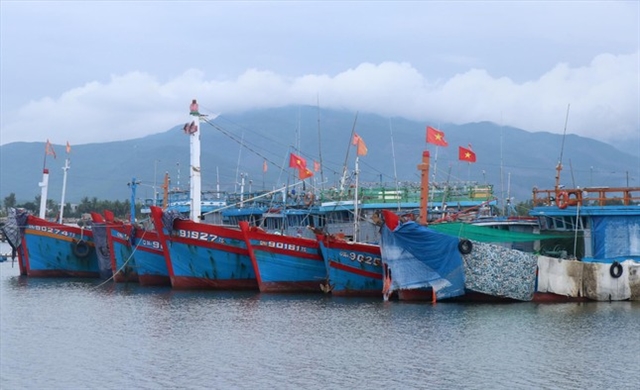 Economy
Economy

Statistics from the General Statistics Office of Vietnam (GSO) showed that the mining industry has posted a record slump since 2011, with the growth rate dropping by 7.1 per cent in 2017 and 4 per cent in 2016.
 |
| Statistics from the General Statistics Office of Việt Nam (GSO) showed that the mining industry has posted a record slump since 2011, with the growth rate dropping by 7.1 per cent in 2017 and 4 per cent in 2016. — VNA/VNS Photo |
by Võ Trí Thành*
Statistics from the General Statistics Office of Việt Nam (GSO) showed that the mining industry has posted a record slump since 2011, with the growth rate dropping by 7.1 per cent in 2017 and 4 per cent in 2016.
This could be a small disappointment amid lots of bright spots in the country’s wider socio-economic picture last year. But this could also lead to an alarming conclusion – the mining industry will be unable to return to growth, and so the growth pattern must be transformed.
 |
| Expert Võ Trí Thành |
The GSO attributed the slump to the plummet in crude oil and coal exploitation. This consequence is directly related to Việt Nam’s past development strategy, when the mining industry still occupied an important position.
Previously, at the initial stage of development, the extraction of natural resources such as oil, coal and minerals played a central role in the economy.Việt Nam is endowed with a wide variety of minerals, with over 5,000 deposits of more than 60 types of minerals discovered, including bauxite, rare earths, tungsten, titanium, phosphate, coal and iron-ore, and mineral construction materials. With its huge reserves, Việt Nam is the third largest mineral producer in the Southeast Asian region.
Mining alone contributed about 30 per cent to the State budget in the mid-90s. It also helped create many jobs for local people.
However, the proportion of the mining industry still accounting for about 10 per cent of GDP is too large, in the context of increasing difficulties in exploitation and fluctuations of price and supply-demand in the global market.
In fact, over the past two decades, many types of Việt Nam’s minerals have been mined significantly and are at risk of depletion.
Problems exist
According to statistics from the Ministry of Natural Resources and Environment, there are about 450 mines managed by the State, but their contributions were less than 3.5 per cent of GDP. Over 170 enterprises operating in the field of minerals in our country still mostly use manual methods and obsolete technology in exploitation activities, not to mention the fact that they lack of sense of law enforcement and proper attention to environmental protection, labour safety, protection of mineral resources, leading to environmental pollution and negative impacts on forests and ecological system.
In addition, due to changes in land purpose for mineral exploitation, the country has changed the purpose of using 11,312ha of forest and forestry land to exploit minerals, but the reforestation in the areas when the exploitation ends is limited.
Other forms of ‘invisible’ pollution, such as radioactivity in many places in the coastal titanium sand mining area, are also reported as “quite high” and “very high” compared to the radiation safety threshold, potentially dangerous for workers and residents nearby.
Overexploiting natural resources without efficient resource allocation will lead to the so-called “curse of natural resources”, meaning that the more natural resources a country has, the worse it performs. The case has been proven by many economists including Jeffrey Sachs and Andrew Warner who wrote a paper titled “The curse of natural resources”, and Thorvaldur Gylfason with “Nature, Power and Growth”.
For example, in Sachs and Warner’s research, they show that there is a negative correlation between the growth of per capita income and the exports of natural resources as a share of GDP.
Most countries that have grown rapidly in recent decades in fact are poor in resources.
The poor performance of countries with natural resource abundance could be attributed to the corruption and misuse of rents from natural resources by policymakers, and the “Dutch disease” which means that revenues from natural resource exports keeping the exchange rate artificially overvalued which makes the rest of the economy and especially manufacturing exports uncompetitive.
Solutions
Realising the challenges, the Vietnamese Government has been moving in the right direction when transforming the growth model from relying on resource exploitation to other areas associated with more sustainable and more environmentally friendly development.
In the socio-economic development strategy until 2020, Việt Nam targets to reduce energy consumption to 2.5-3 per cent of GDP per annum, increase the foreign coverage ratio to 45 per cent, and have 80 per cent of production premises meeting environmental standards.
The country is a signatory of the Paris Agreement, in which Việt Nam pledges to cut green house gas (GHG) emissions by 8 per cent by 2030 compared to the business as usual scenario.
However, green growth could be more a slogan than a distinctive policy if the Government, firms and consumers do not take action now.
First of all, the mindset on growth and natural resource use needs to change. The environment is a kind of capital and it is necessary to make contributions to output, so that it is accounted for, invested in and exploited efficiently.
As the largest consumer, the Government should take the lead in purchasing green goods and services. The Government should use market-based mechanisms to enable economic agents to internalise social environmental costs and to encourage diffusion of green technologies through taxes and fees.
Pervasive subsidies and other distortions that lead to excessive consumption of energy and accelerated GHG emissions must be ended.
The Government needs to encourage renewable energy development and green innovation, and liberalise trade in environmental goods and services.
The sharp decline of the mining sector is a positive event for business owners to think of reform and innovation in the direction of sustainable growth.
Company managers should be aware that there is no trade-off between business efficiency and environmentally-friendly production. ‘Green’ business is also about firms’ corporate social responsibility and reputation.
‘Green’ consumption should become a decisive factor for both business development and consumers’ behaviour. — VNS
* Võ Trí Thành is a senior economist at the Central Institute for Economic Management (CIEM) and a member of the National Financial and Monetary Policy Advisory Council. A doctorate holder in economics from the Australian National University, Thành mainly undertakes research and provides consultation on issues related to macroeconomic policies, trade liberalisation and international economic integration. Other areas of interest include institutional reforms and financial systems.









